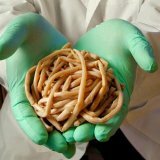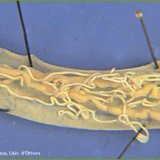Echinococcosis of the lungs

Description
Echinococcosis of the lungs is a chronic disease characterized by the development of multiple cystic lesions in the lungs. They are caused by larvae of Echinococcus glanulosus.
In the sexually mature form, the length of the helminth reaches 7 mm, and also has a head with suckers. The larval stage of the chain can be in the body of people for dozens of years. Represents an echinococcal single-chamber cyst oval or round, filled with fluid.
Infection of humans occurs when the eggs of the helminth enter water or food. They are very stable in the external environment. Can be a long period of time in the heat, cold and in a humid environment.
The owners of echinococcus are animals. Eggs they excrete with feces.
Diagnosis of the disease is more common in children, but the likelihood of the disease in an adult is also very high.
Causes of
The main source of infection is a wild or domestic animal. Gets the disease when eating meat waste.
In addition, infection can occur when:
- consumes meat of wild animals that feed on grass with ribbonworm eggs;
- in the process of carving an animal carcass;
- during the manufacture of fur garments;
- on contact with saliva of an infected pet;
- when using unwashed fruits, vegetables;
- Drinking water from unprotected sources( springs and keys).
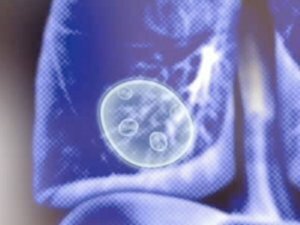 Shepherds, shepherds, shearers are at risk.
Shepherds, shepherds, shearers are at risk.
Symptoms of
There are 3 stages of development of echinococcosis:
- Latent stage. The asymptomatic stage can last several years. The cyst grows very slowly and is accidentally detected by X-ray examination.
- Stage of clinical symptoms. There is pain in the chest, a strong cough, shortness of breath, weakness. The cyst increases in size.
- Stage of complications development. Suppuration of the cyst, its infection, followed by a breakthrough in the cysts in the bronchi, pleura, abdominal cavity, biliary tract. Begin to squeeze the tissue, nerve endings, blood vessels, bile ducts.
The initial stage of the disease is characterized by the symptoms of :
- dry cough;
- pain in the chest.
Cough gets an unpleasant odor, becomes foamy, moist. Without proper treatment, veins of blood appear in it.
For the late stage of the disease is characterized by:
- worsening of symptoms;
- cyst increases;
- develops pneumonia;
- is compressed by pulmonary tissue. The cyst can break at any time.
- weight reduction.
Diagnosis
For diagnosis, laboratory and instrumental methods are used, as well as X-ray examination, tomography, scanning, laparoscopy, serological methods.
Laboratory tests:
- Immunological tests. Identify in the blood and contents of the cyst proteins that are characteristic for this type of parasite.
- Tests that measure the extent of lung damage.
- General analysis of blood, feces and urine.
Instrumental diagnostic methods:
- ultrasound;MRI, CT.
- Radiographic study.
- Laparoscopic method.
Treatment
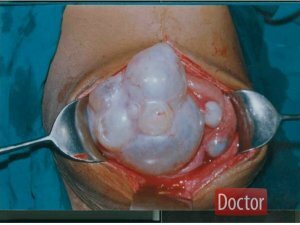 Apply conservative( non-surgical) treatment of pathology and surgical.
Apply conservative( non-surgical) treatment of pathology and surgical.
The choice of the treatment scheme of the disease is directly related to the location of helminths, the clinical picture of the course of the disease and the general condition of the patient.
Conservative treatment involves eliminating the symptoms of the disease and relapses. The patient receives analgesics and antiemetics( to eliminate pain, vomiting and nausea).
Treatment of echinococcus is surgical in most cases, Antiparasitic drugs do not give positive results.
The cyst is removed with further suturing of the cavity formed after removal of the formation.
The following methods are used:
- Resection of the lung. It is performed with extensive inflammatory processes, as well as in combination of echinococcosis with other pathologies requiring lung resection.
- Echinococcectomy. The contents of the cyst are suctioned and the fibrous capsule is dissected.
- Radical operation. Complete elimination of the cause of pathology.
- Palliative surgery. Only the patient's condition makes it easier.
- Operations that eliminate complications.
General recommendations:
Diet therapy( table number 5).The diet contains dishes with easily digestible protein, vitamins and minerals. Limited consumption of fats.
Folk remedies
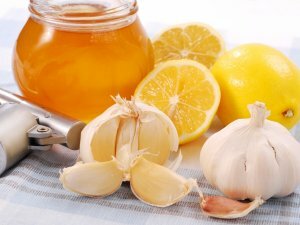 Because the cyst is surgical, folk remedies can only be used at the initial stage.
Because the cyst is surgical, folk remedies can only be used at the initial stage.
The following folk recipes are in demand:
- Dry the lemon peel into powder. Pour a teaspoonful of powder with a cup of hot water. Take in the morning before breakfast in the warm.
- Echinococcus perishes under the influence of wormwood( infusion), mustard seeds, garlic and horseradish. They must be consumed daily.
- Highly effective means: 1 liter of boiled water, 2 heads of garlic, 1 tablespoon of honey, 1 lemon together with skin. The ingredients are thoroughly mixed. The mixture is taken in the morning on an empty stomach on a tablespoon.
Complications of
The complications of pulmonary echinococcus are as follows:
- A breakthrough of a festering cyst in the bronchi can cause asphyxia. It is accompanied by anaphylactic shock.
- Urticaria( hives) appear on the skin. The liquid that has poured from the cyst cavity causes new bubbles.
- Mechanical jaundice due to increased bilirubin.
- Extension of the esophagus and anterior abdominal wall.
- Swelling of lower extremities.
- Bleeding due to lung injury.
- Deterioration of blood supply to critical organs.
Prophylaxis of
All patients after the operation should be on dispensary for a long period( up to 10 years).The survey is conducted annually.
To prevent echinococcosis, certain rules must be observed:
- not allow children to play with other people's pets;
- should be washed thoroughly by hand after working in the suburban area,
- should not consume the liver and lungs of animals. It is in them that the larvae of parasites are localized;
- periodically examine domestic dogs;
- should be carefully processed before consuming food;
- do not use water from open sources;
- slaughter cattle in specially designated places;
- when working with animals, it is necessary to periodically take tests for the definition of echinococcosis.
As you can see, the rules are very simple, but observing them will prevent not only echinococcosis, but also other diseases of the gastrointestinal tract.
Fluorography examines the disease before the onset of clinical symptoms.

